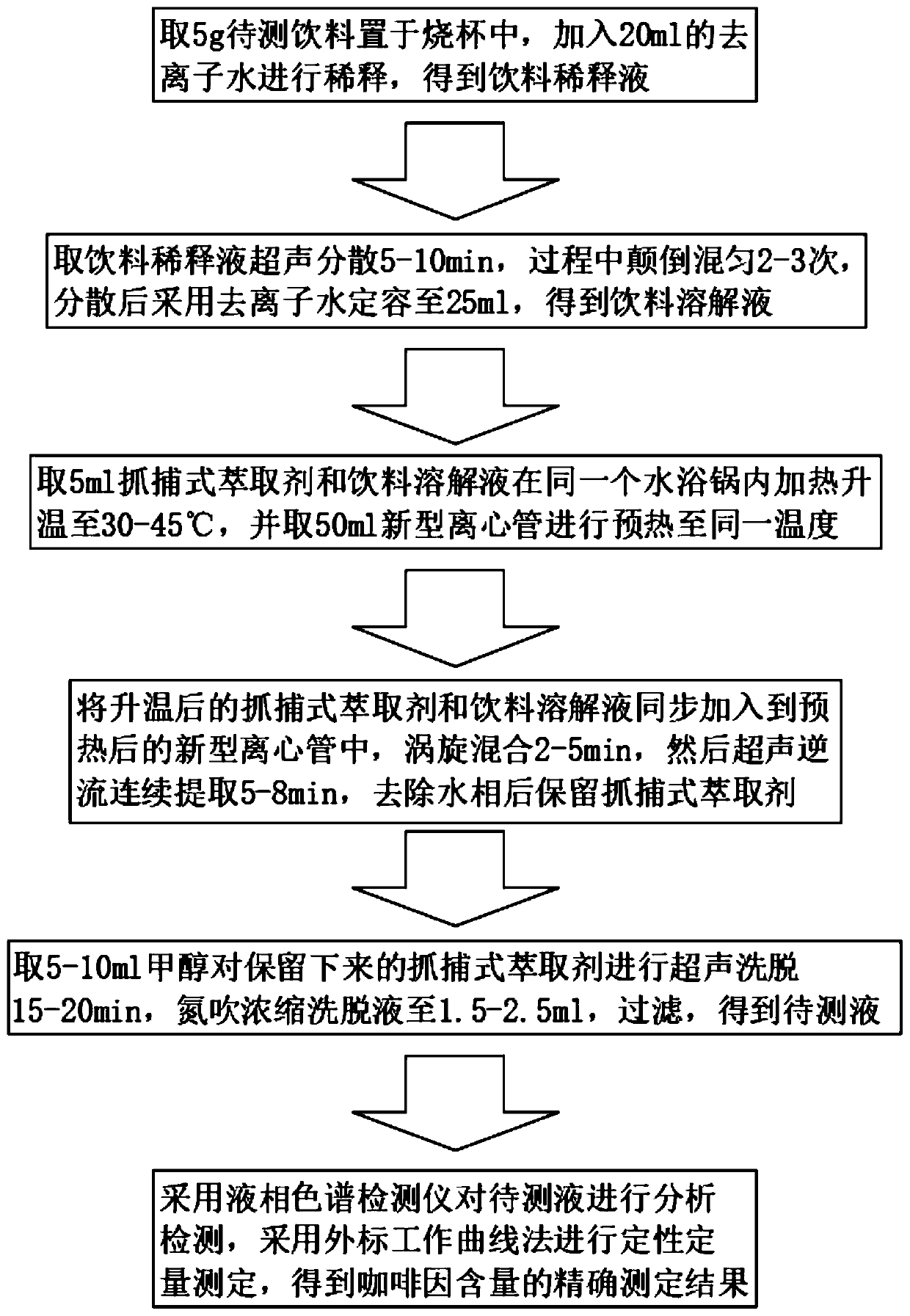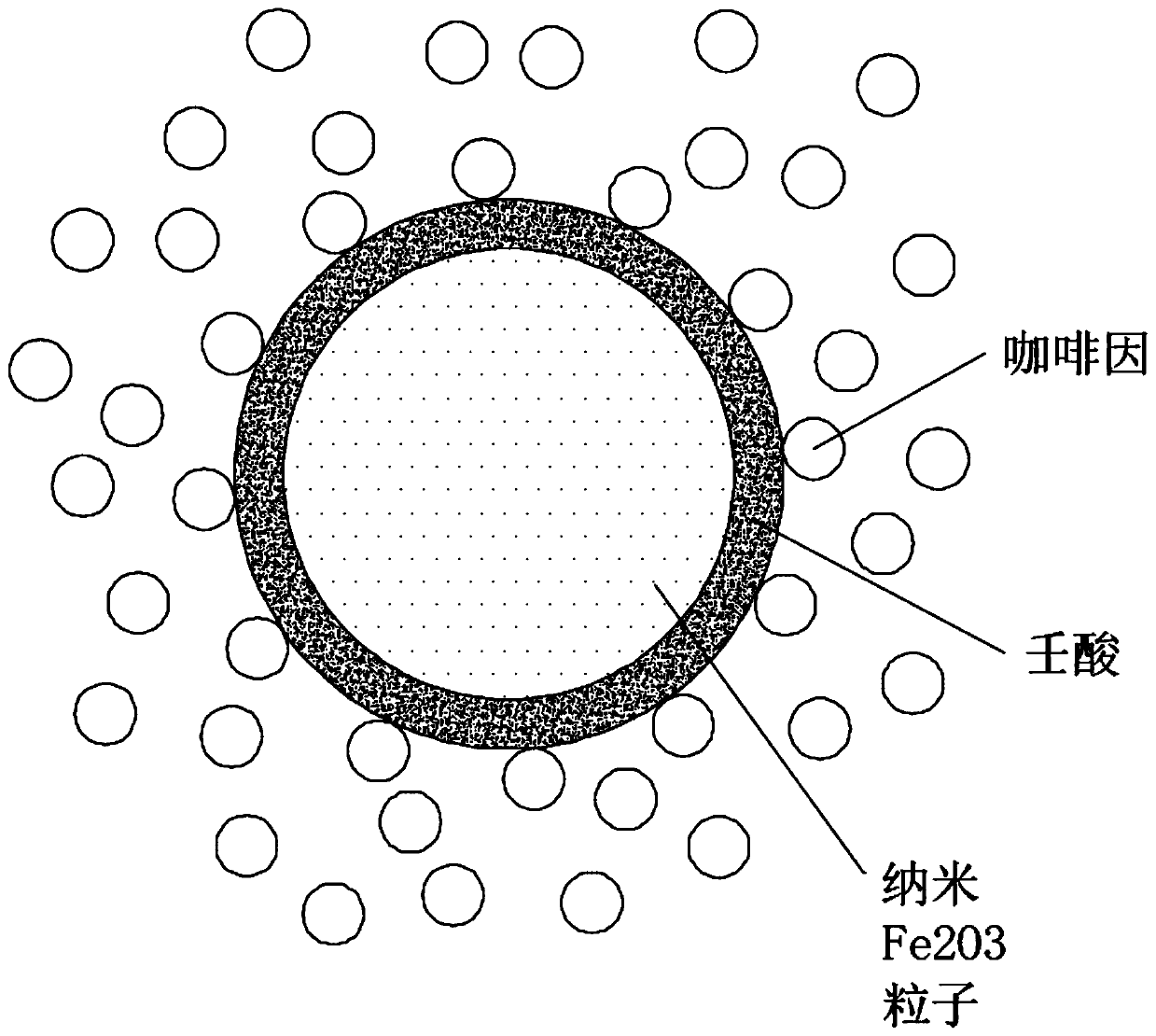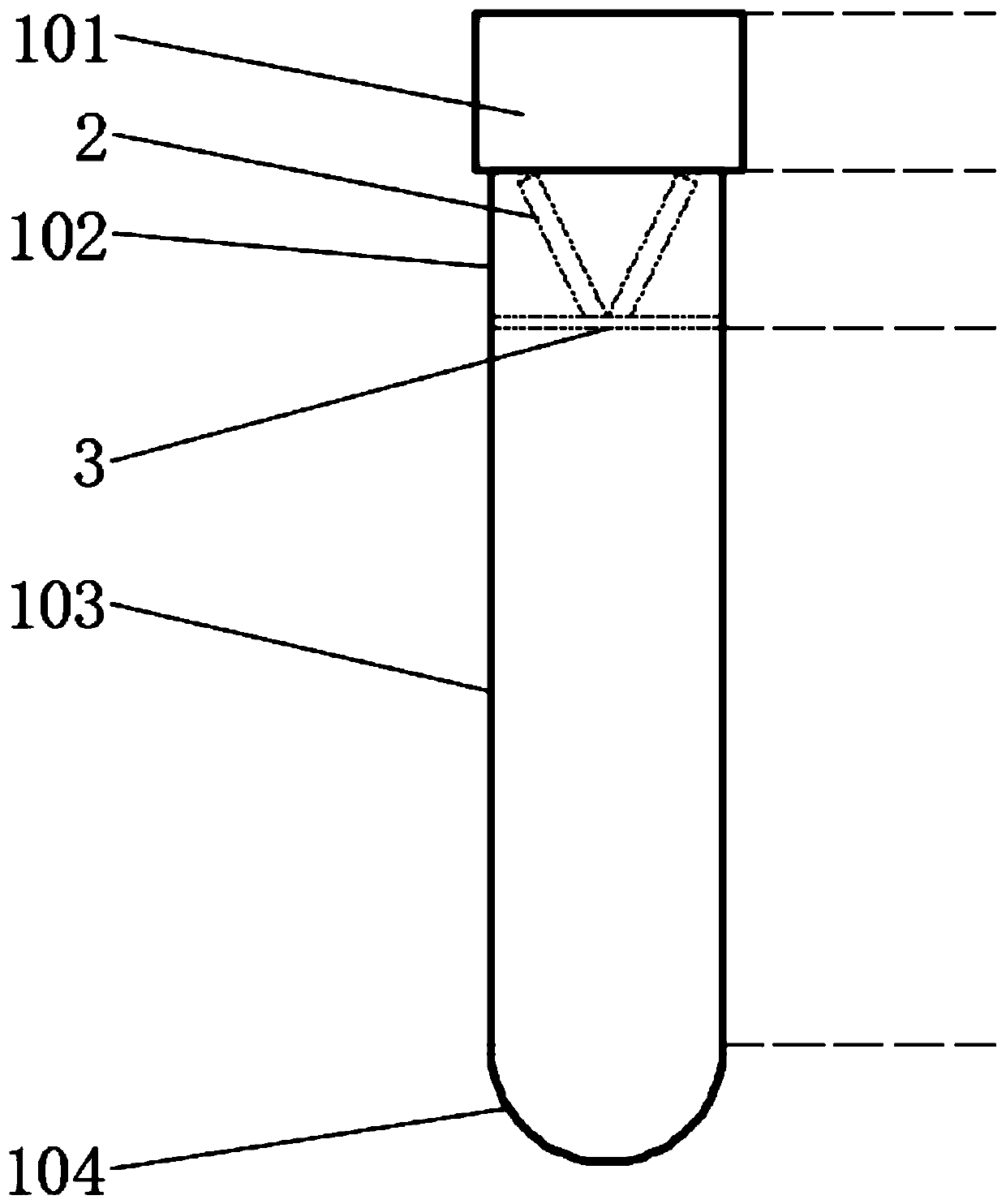Capture-type detection method for extracting caffeine content from beverages
A detection method and caffeine technology, which are applied in measurement devices, material separation, analysis materials, etc., can solve the problems of physical health threat, high detection cost, weak extraction ability, etc., to achieve auxiliary adsorption effect, improve extraction effect and extraction efficiency. , the effect of promoting the mixing effect
- Summary
- Abstract
- Description
- Claims
- Application Information
AI Technical Summary
Problems solved by technology
Method used
Image
Examples
Embodiment 1
[0037] see figure 1 , a kind of detection method of the content of caffeine in grab type extraction beverage food, comprises the following steps:
[0038] S1. Take 5g of the beverage to be tested and place it in a beaker, add 20ml of 60°C deionized water for dilution to obtain a beverage dilution;
[0039] S2. Take the beverage diluent and ultrasonically disperse it for 5 minutes, mix it upside down twice during the process, cool to room temperature, and after dispersion, use deionized water at normal temperature to set the volume to 25ml to obtain a beverage solution;
[0040] S3. Take 5ml of capture extractant and beverage solution and heat them up to 30°C in the same water bath, and take 50ml of new centrifuge tubes to preheat to the same temperature;
[0041] S4. Synchronously add the warmed capture extractant and beverage solution into the preheated new centrifuge tube, vortex and mix for 2 minutes, then ultrasonic countercurrent continuous extraction for 5 minutes, and re...
Embodiment 2
[0050] see figure 1 , a kind of detection method of the content of caffeine in grab type extraction beverage food, comprises the following steps:
[0051] S1. Take 5g of the beverage to be tested and place it in a beaker, add 20ml of 70°C deionized water for dilution to obtain a beverage dilution;
[0052] S2. Take the beverage diluent and ultrasonically disperse it for 8 minutes. During the process, invert and mix twice, cool to room temperature, and after dispersion, use deionized water at normal temperature to set the volume to 25ml to obtain a beverage solution;
[0053] S3. Take 5ml of the capture extractant and the beverage solution and heat it up to 40°C in the same water bath, and take a 50ml new centrifuge tube to preheat to the same temperature;
[0054] S4. Synchronously add the heated capture extractant and beverage solution into the preheated new centrifuge tube, vortex and mix for 3 minutes, then ultrasonically countercurrently extract continuously for 6 minutes...
Embodiment 3
[0059] see figure 1 , a kind of detection method of the content of caffeine in grab type extraction beverage food, comprises the following steps:
[0060] S1. Take 5g of the beverage to be tested and place it in a beaker, add 20ml of 80°C deionized water for dilution to obtain a beverage dilution;
[0061] S2. Take the beverage diluent and ultrasonically disperse it for 10 minutes, mix it upside down 3 times during the process, cool to room temperature, and use deionized water at normal temperature to dilute to 25ml after dispersion to obtain a beverage solution;
[0062] S3. Take 5ml of the capture extractant and the beverage solution and heat it up to 45°C in the same water bath, and take a 50ml new centrifuge tube to preheat to the same temperature;
[0063] S4. Synchronously add the heated capture extractant and beverage solution into the preheated new centrifuge tube, vortex and mix for 5 minutes, then ultrasonic countercurrent continuous extraction for 8 minutes, and re...
PUM
 Login to View More
Login to View More Abstract
Description
Claims
Application Information
 Login to View More
Login to View More - R&D Engineer
- R&D Manager
- IP Professional
- Industry Leading Data Capabilities
- Powerful AI technology
- Patent DNA Extraction
Browse by: Latest US Patents, China's latest patents, Technical Efficacy Thesaurus, Application Domain, Technology Topic, Popular Technical Reports.
© 2024 PatSnap. All rights reserved.Legal|Privacy policy|Modern Slavery Act Transparency Statement|Sitemap|About US| Contact US: help@patsnap.com










